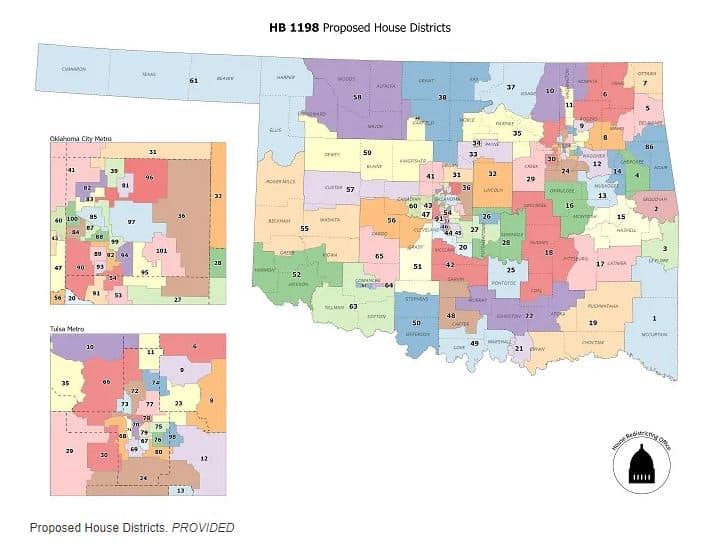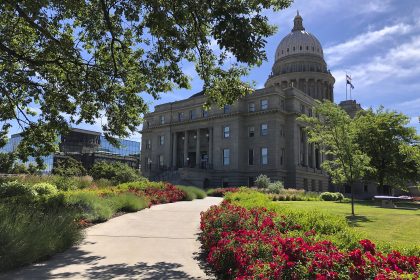Oklahoma Legislature Approves New State District Map

OKLAHOMA CITY – State lawmakers in Oklahoma this past week came to bipartisan agreement on a new legislative map to be used in upcoming state House and Senate races.
And in something of the rarity in this hyper-sensitive time, the new maps received overwhelming bipartisan support.
By law, the Legislature must redraw its legislative and congressional district boundaries to reflect changes in population every 10 years immediately following the decennial census.
Under the Oklahoma Constitution, redistricting plans for state legislative districts must be completed by the end of this year’s regular session.
Republican state Sen. Lonnie Paxton, chair of the Senate Select Committee on Redistricting, said the proposed maps benefited from an open and transparent process.
“At the outset, we pledged to have an open and transparent redistricting process and we delivered,” he said. “At every turn, we engaged with the public and sought their input in the redistricting process as part of our commitment to transparency. The results were maps that are more compact and better than the current legislative boundaries.”
“The new redistricting boundaries ensure each Oklahoman has an equal voice in state and national government for the next 10 years,” agreed Republican state Rep. Ryan Martinez, chair of the House Redistricting committee.
“This year, every member of the House served on a redistricting committee, and over 20 public meetings, including virtual, were held to get as much input as possible into this important process. I’m glad to send these plans to the governor’s desk so they can be signed into law and fully implemented,” Martinez said.
In a separate statement, Senate Democratic Leader Kay Floyd said she and her fellow Democrats in the state legislature continue to believe the redrawing of legislative district lines should be handled by an independent redistricting commission.
“Since this option is not currently possible, we chose to engage with the existing process led by the Senate Select Committee on Redistricting. Our caucus had three members on the committee, Sens. Kevin Matthews, Julia Kirt, and Michael Brooks, who served as a vice chair of the committee,” she said.
“While the new map produced by the committee and approved by the Senate today is not perfect, members of our caucus were able to vote for it because the redistricting process included input from our caucus and from the communities we represent,” Floyd continued. “The redistricting bill passed by the Senate Tuesday also includes an amendment authored by Sen. Kirt, which will ensure the district lines are adjusted if necessary when final population data is received from the United States Census Bureau later this year.
“As the redistricting process moves forward, Oklahoma Senate Democrats will continue communicating with our constituents to make sure they are aware of the new districts and have an opportunity to make their voices heard,” she said.
Between December of last year and March of this year, the legislature theld 22 town hall meetings – 18 in person and four virtual – to solicit input from the public.
All Oklahomans were invited to attend, ask questions, submit testimony and talk to lawmakers and staff about what makes the most sense for their community. Meetings were livestreamed, when possible, and recorded and archived on the House and Senate websites.
Redistricting maps and all related materials are available for review on the redistricting websites of the House and the Senate. Should they have any addtional questions about the map or the process, members of the general public are being asked ot submit them via email to [email protected] in the Senate and to [email protected] in the House.
Congressional redistricting has no deadline in Oklahoma. The Legislature plans to reconvene in a special session in the fall to complete congressional redistricting and make any necessary adjustments to legislative districts upon the release of final census data.
The U.S. Census Bureau failed to meet the April 1 deadline to release final data to the states and has announced the data will be released in September.























